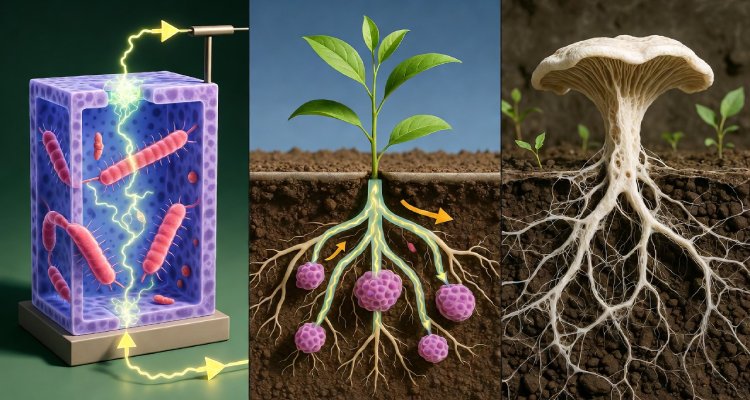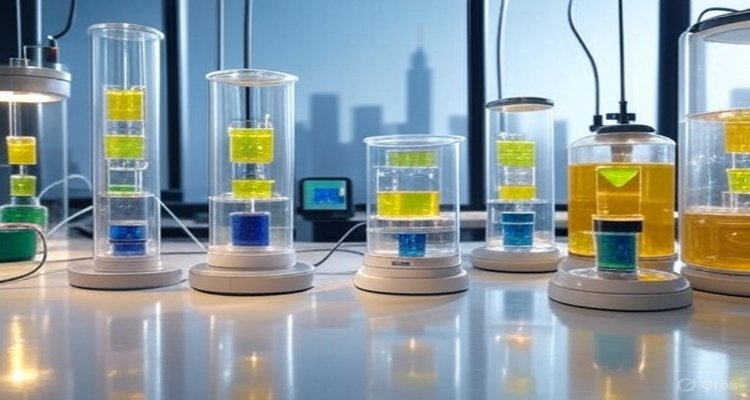Bio-Batteries: How Living Cells Could Power Future Cities
Scientists are exploring bio-batteries powered by living cells, a breakthrough that could reshape how future cities generate and store sustainable energy.
Introduction: A New Charge for the Future
In an age where the climate crisis collides with soaring energy demands, the hunt for renewable, reliable, and sustainable solutions has never been more urgent. While solar panels cover rooftops and wind turbines dot coastlines, researchers are now looking inward—deep into the biology of living organisms. Imagine a future city where the microscopic processes inside living cells don’t just sustain life, but also illuminate skyscrapers, power transport systems, and keep entire neighborhoods running. This is the bold promise of bio-batteries—innovative energy devices that harness the natural chemistry of life itself.
Context & Background: From Fossil Fuels to Living Power
Traditional energy infrastructure relies heavily on fossil fuels, which account for roughly 80% of global energy consumption. Despite the rise of solar, wind, and hydroelectric power, these resources still face challenges of storage, scalability, and intermittency.
Bio-batteries step onto the scene as a radical alternative. Unlike lithium-ion batteries, which require rare metals and produce significant waste, bio-batteries directly tap into biochemical reactions. Early experiments date back decades, when scientists first observed how microbial fuel cells (MFCs) could generate small electric currents. These breakthroughs have since evolved into a rapidly growing field, merging biotechnology, materials science, and urban sustainability efforts.
Main Developments: How Bio-Batteries Work
At the heart of bio-battery technology are the metabolic processes of living cells—whether microbial, plant-based, or even human-derived.
Microbial Fuel Cells (MFCs):
Tiny bacteria break down organic compounds, releasing electrons as a natural byproduct. Electrodes capture these electrons, converting chemical energy into usable electricity.
Plant Microbial Systems:
Certain bio-batteries use the natural sugars and metabolic reactions from plant roots, converting them into electrical energy without harming the plant.
Enzyme-Based Batteries:
Instead of relying on whole organisms, these designs transfer energy through enzymes that facilitate electron flow during natural biochemical reactions.
Recent lab prototypes have shown that bio-batteries can power small electronic devices such as LED lights and medical sensors. Scaling these innovations holds the tantalizing prospect of self-powered smart homes, clean transportation hubs, and even “living grids”—urban energy systems powered by biological networks.
Expert Insight & Public Sentiment
Researchers are cautiously optimistic.
“Bio-batteries won’t replace solar or wind overnight, but they offer something unique—decentralized, environmentally friendly power that could complement existing renewables,” explains Dr. Kavita Sharma, a bioenergy researcher at the Indian Institute of Science.
Public perception, meanwhile, is tinged with curiosity and skepticism. The idea of cities powered by bacteria can feel futuristic—even unsettling. Yet consumer surveys show growing acceptance of unconventional energy sources, especially among younger generations concerned about climate responsibility and resource scarcity.
Impact & Implications: A City Alive with Energy
If scaled successfully, bio-batteries could transform urban landscapes in three key ways:
-
Sustainability: Unlike metal-based batteries, which rely on finite mining resources, bio-batteries are biodegradable and regenerative. This reduces hazardous waste and environmental impact.
-
Energy Independence: Cities could generate energy locally using waste materials, agricultural byproducts, or even wastewater—turning trash into power.
-
Healthcare & Wearables: On a smaller scale, bio-batteries may power medical implants or wearable devices using energy generated directly from the human body.
However, challenges remain. Current bio-batteries generate relatively low power outputs compared to conventional batteries, making widespread adoption dependent on breakthroughs in efficiency and scalability. Infrastructure upgrades and regulatory support will also be crucial.
Challenges Ahead: Scaling the Science
Experts caution that enthusiasm must be balanced with realism.
-
Low Power Density: Present models can power small electronics, but not yet large infrastructure like trains or factories.
-
Maintenance Issues: Living systems require stable conditions to survive, raising questions about durability and cost.
-
Public Trust: Perceptions of “living power” must be addressed through safety standards and transparent science communication.
International funding initiatives, university start-ups, and climate-tech accelerators are actively racing to overcome these hurdles.
Conclusion: The Living Pulse of Tomorrow’s Cities
Bio-batteries may still be in their experimental stage, but they represent an inspiring vision of the future—where human ingenuity taps the very biology of life to sustain modern civilization. From lighting city streets with plant-powered grids to fueling medical sensors with the body’s own energy, these innovations remind us that the answers to our biggest challenges may already exist within nature itself.
The question is not if bio-batteries will influence urban sustainability, but when and how fast. As the drive toward carbon neutrality accelerates, tomorrow’s cities may not just be smart. They may also be alive.
Disclaimer: This article is for informational purposes only and is based on emerging scientific research. It does not constitute technical, medical, or investment advice.










